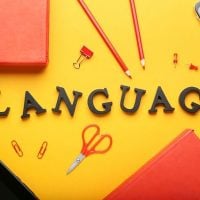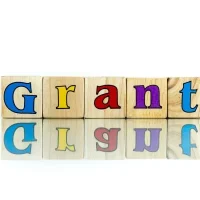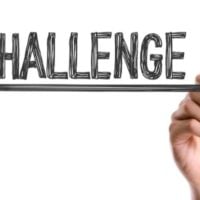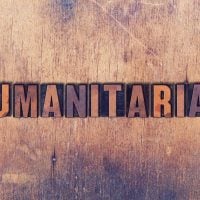Deadline: 3 April 2020
The Executive Office of the President, Office of National Drug Control Policy (ONDCP), and the Department of Health and Human Services (HHS), Centers for Disease Control and Prevention (CDC), National Center for Injury Prevention and Control (NCIPC) are accepting applications for Fiscal Year (FY) 2020 DrugFree Communities (DFC) Support Program grants.
The purpose of the DFC Support Program is to establish and strengthen collaboration to support the efforts of community coalitions working to prevent youth substance use. By statute, the DFC Support Program has two goals:
- Establish and strengthen collaboration among communities, public and private non-profit agencies, as well as federal, state, local, and tribal governments to support the efforts of community coalitions working to prevent and reduce substance abuse among youth (individuals 18 years of age and younger).
- Reduce substance abuse among youth and, over time, reduce substance abuse among adults by addressing the factors in a community that increase the risk of substance abuse and promoting the factors that minimize the risk of substance abuse.
Funding Information
- Total Period of Performance Funding: $125,000,000;
- Award Ceiling: $125,000;
- Total Period of Performance Length: 5 years
Outcomes
- A series of short-term and intermediate outcomes are expected to be achieved as a result of recipient efforts by the end of the period of performance. The short-term and intermediate outcomes should be tailored to the work plan (aka 12-Month Action Plan) of strategies selected.
- Short-term Outcomes:
- Identified local youth substance use;
- Identified community conditions that contribute to youth substance use;
- Increased collaborations among communities, public and private non-profit agencies to build capacity to address youth substance use;
- Increased collaborations with federal, state, local, and tribal governments to build capacity to change the conditions;
- Increased ability to respond to and prevent youth substance use.
- Intermediate Outcomes:
- Addressed factors in a community that increase the risk of youth substance use;
- Increased the promotion of factors that minimize the risk of youth substance use;
- Improved systems and/or processes;
- Decreased the ease, ability, and opportunity for target population to access substances;
- Changed the culture and context within which decisions about substance use are made.
Strategies and Activities
- Recipients are expected to work with leaders in their communities to identify and address local youth substance use problems and create sustainable community-level change through the use of evidence based prevention strategies and the use of the Seven Strategies for Community Level Change.
- Recipients are expected to choose strategies that will lead to community-level change. Such strategies seek to:
- Limit access to substances;
- Change the culture and context within which decisions about substance use are made; and/or
- Shift the consequences associated with youth substance use.
- Evidence exists that well-conceived and implemented policies at the local, state, and national levels can reduce community-level alcohol, tobacco, and other drug problems.
Seven Strategies for Community Level Change
The Seven Strategies for Community Level Change, include efforts that affect individuals as well as an entire community.
- Provide Information: Educational presentations, workshops or seminars, and data or media presentations (e.g., Public Service Announcements (PSAs), brochures, town halls, forums, web communications).
- Enhance Skills: Workshops, seminars, or activities designed to increase the skills of participants, members, and staff (e.g., training and technical assistance, parenting classes, strategic planning retreats, model programs in schools).
- Provide Support: Creating opportunities for participation in activities that reduce risk or enhance protection (e.g., alternative activities, mentoring, referrals for service, support groups, youth clubs).
- Enhance Access/Reduce Barriers: Improving systems/processes to increase the ease, ability, and opportunity to utilize those systems and services (e.g., assuring transportation, housing, education, safety, and cultural sensitivity) in prevention initiatives. Reduce Access/Enhance Barriers: Improving systems/processes to decrease the ease, ability, and opportunity for youth to access substances (e.g., raising the price of single-serve cans of alcohol, implementing retail alcohol/tobacco compliance checks).
- Change Consequences: Increasing or decreasing the probability of a behavior (incentives/disincentives) by altering the consequences for performing that behavior (e.g., supporting DUI checkpoints, party patrols, and recognition programs for merchants who pass compliance checks; publicizing businesses non-compliant with local ordinances).
- Change Physical Design: Changing the physical design of the environment to reduce risk or enhance protection (e.g., re-routing foot/car traffic, adjusting park hours, alcohol/tobacco outlet density). NOTE: DFC federal funds cannot support landscape and lighting projects. As such, costs for these projects cannot be used as match.
- Modify/Change Policies: Change in written procedures, by-laws, proclamations, rules, or laws, to the extent applicable law and policies allow (e.g., workplace initiatives, law enforcement procedures and practices, public policy actions, systems change).
Note: As per both HHS/CDC and ONDCP guidelines, and applicable Anti-Lobbying provisions, impermissible lobbying with federal dollars is not permitted. Additionally, such costs for impermissible lobbying cannot be used as match.
Eligibility Criteria
- Nonprofits having a 501(c)(3) status with the IRS, other than institutions of higher education.
- State governments
- County governments
- City or township governments
- Territorial governments
- Special district governments
- Independent school districts
- State controlled institutions of higher education
- American Indian or Alaska Native tribal governments (federally recognized or state-recognized)
- Public institutions of higher education
- Nonprofits without 501(c)(3) status with the IRS, other than institutions of higher education
- Private institutions of higher education
- Professional associations
- Voluntary organizations
- Faith-based organizations
- American Indian or Alaska native tribally designated organizations.
How to Apply
All applications must be submitted via given website.
For more information, visit https://www.grants.gov/web/grants/view-opportunity.html?oppId=324650









































